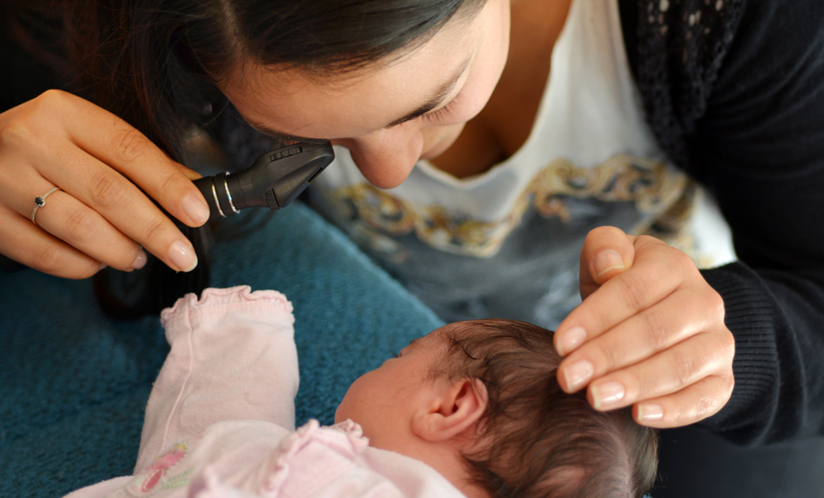Research Finds Cataract Surgery in Infancy Increases Glaucoma Risk

By Rajee Suri
Emory University researchers have found that children who undergo cataract surgery as infants have a 22 percent risk of developing glaucoma by the time they are 10 years old, whether or not they receive an intraocular lens implant. The findings are part of a nationwide study funded by the National Eye Institute (NEI) which today published its findings in JAMA Ophthalmology. NEI is part of the National Institutes of Health.
Investigators said the results underscored the need for long term glaucoma surveillance among infant cataract surgery patients, and that it challenged the notion that replacing the child’s lens with an implanted one protected the child from developing glaucoma.
In the study, 40 percent of the infants followed who underwent cataract removal had either developed glaucoma or shown signs of the condition after a decade. Glaucoma is a sight-threatening condition that damages the optic nerve which connects the eye and brain.
Azhar Nizam, MS, a Senior Associate in Emory’s Rollins School of Public Health, was the Director of the Statistical and Data Coordinating Center for the multi-center Infant Aphakia Treatment Study. “The follow up rates in this study were extraordinary -- over 95 percent of the children were examined ten years later,” he says. “The study has documented changes in the vision of the children, structural changes in the treated eyes, adverse events such as glaucoma and eye injuries, as well as impacts on motor skills and behavioral functioning as the children grew.”
The JAMA Ophthalmology paper is one of over 60 published over the course of the study.
The 114 study participants (aged one to six months at the time of cataract removal) had been born with a cataract in one eye. In the operating room, the infants were randomly assigned to receive an artificial lens implant or to go without a lens, a condition called aphakia.
Annually, fewer than 2,500 children in the U.S. are born with cataracts, a clouding of the eye’s lens. Surgery is used to remove and replace the cloudy lens. To allow the child’s eye to focus light properly following removal of the cataract, an intraocular lens implant may be placed at surgery, or the eye may be left aphakic, and a contact lens (or glasses, if both eyes have had a cataract removed) may be used to provide the needed correction.
The findings also confirm that the timing of cataract surgery is a balancing act: Whereas surgery at younger ages increases glaucoma risk, delaying surgery increases risk of amblyopia, a leading cause of visual impairment in children that results when the cataract in one eye causes the brain to ignore signals from that eye and favor the other eye.
Nizam says "future studies of glaucoma following cataract surgery in children will benefit from the groundwork laid by this longitudinal study."
Investigators at Emory University, Stanford University, Harvard University, Duke University, Indiana University, Vanderbilt University, Medical University of South Carolina, University of Minnesota, Cleveland Clinic, Baylor University, Oregon Health and Science University, Miami Children’s Hospital, and University of Texas Southwestern helped lead the trial.
NEI funding includes grants UG1EY013287, UG1EY013272, UG1EY025553, and P30EY026877. The clinicaltrial.gov identifier is NCT00212134.


